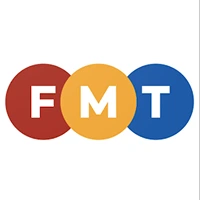
In a previous instalment, I wrote that the medical insurance sector is facing three big issues: rising risk within the risk-pool; rising healthcare costs, and rising medical claims.
As a result, the sector is taking steps to reduce risk in the risk-pool, bring down healthcare costs and reduce the number medical claims.
In this instalment, I elaborate on issues surrounding the risk-pool within the medical insurance landscape in Malaysia.
As previously mentioned, everyone needs to understand that in Malaysia, the medical insurance business is run by entities that are profit-driven. That makes the country a private health insurance market.
This is unlike some countries where insurance is run on a not-for-profit basis under the auspices of government or public-sector agencies — as social health insurance. This distinct difference really underpins the ability to understand the insurance sector in Malaysia today.
As a business entity providing financial risk-mitigation, insurers allow clients to pay a premium to insure themselves against the probability of a financial expense, in this case, a medical expense.
The insurance company collects and pools all the funds collected; and makes payouts against claims as they occur. The insurer only makes a profit when a lower number of claims is made as compared to the total sum of money collected in premiums.
To be safe, insurers try to get a significant number of low-risk individuals to subscribe to an insurance scheme.
Within the medical insurance context, this means insurers want individuals who are healthy and have no pre-existing conditions — those less likely to fall ill and make frequent claims that require payout.
This has been the premise under which medical insurance has operated in Malaysia.
In fact, the whole idea of excluding individuals with pre-existing conditions may be one of the contributory factors to why the percentage of people who are subscribed to medical insurance in Malaysia is still low (less than 30%).
This can be further contextualised by keeping in mind that almost 50% of Malaysians have some pre-existing condition or another.
Now if the insurance guys had thought this out well enough and restricted “high-risk” individuals from buying medical insurance in the first place, why is it that they are now taking measures to reduce risk in the risk-pool?
Simple. Two factors are contributing to cause risk to rise within the risk-pool of people already subscribed to medical insurance.
First is the rising prevalence of multiple non-communicable diseases (NCDs) in a sudden fashion.
Individuals who were previously low-risk are now becoming high-risk as their lifestyle risk-factors are suddenly rising, causing them to be diagnosed with diseases much earlier than expected.
So suddenly, there is a rising number of claims due to a larger number of people falling ill.
Second is due to a more serious phenomenon. Gaming. Individuals (and sometimes the unscrupulous agents selling them medical insurance) are gaming the system by making a false declaration that they have no pre-existing disease when they sign up for insurance.
These individuals, who are actually high risk, end up making far more medical claims than the insurer has bargained for.
As mentioned above, the industry is managing this rise in risk by taking measures to reduce it.
This primarily can be seen when individuals with abnormal test results for things like fasting blood sugar or glycosylated hemoglobin (HbA1c) (both diabetes markers) are denied their medical claims when they are admitted for another acute problem under the premise that they had pre-existing diabetes which they did not disclose when purchasing the insurance.
Hence the denial of claim.
Can the insurer ascertain truthfully whether an individual is making a false declaration as regards a pre-existing disease? Or is it genuinely a case of the individual having developed an NCD over the course of time?
This is where genuine, valid control measures are needed rather than the current scenario where a hammer is being used to swat a fly.
First, proper medical checks should be instituted for individuals before allowing them to buy their medical insurance.
Due to competition, more and more insurance companies are merely letting people purchase policies based on just a declaration, especially online; and if anything, data from the National Health and Morbidity Survey is telling us that up to 50% of people actually don’t even know they have NCD until they are tested.
An accurate medical checkup will allow us to weed out this gaming element significantly.
So it’s not even a case of them making a false declaration, it may genuinely be a case of them not knowing they have a chronic disease. Currently, the only way they find out is when they are ill with something else, and end up with double jeopardy when their claims are rejected by the insurer.
Second, once an individual is subscribed to medical insurance, annual, accurate health screenings should be made compulsory. Insurers should even provide it as part of the incentive to policyholders to continue their insurance by lowering premiums if they test “healthy”.
This way, the actual risk in the risk-pool can be mitigated and kept in check.
Qualitative evidence tells us that many are denied medical insurance due to their pre-existing conditions.
Is there a mechanism to enrol these individuals with pre-existing conditions into medical insurance?
Yes, and it is even financially viable, but that’s another story for another time.
See also: Is the medical insurance system broken?
The views expressed are those of the writer and do not necessarily reflect those of FMT.






